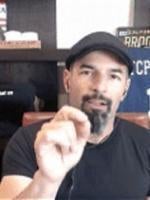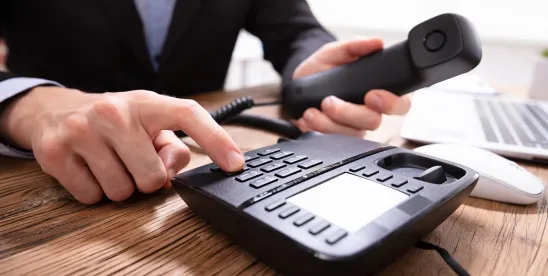You can’t fight the system TCPAWorld.
Buckle up, I’m about to ruin your weekend.
I won’t bury the lead. A Virginia district court just held that a manually placed call—agent dialed all ten digits folks—may still have been an ATDS call because it was placed from a workstation that had access to cloud-based dialer domains; even though the agent placing the call lacked credentials to access those domains. Making matters worse—the court expressly finds that a popular contact solution has the capacity to store and produce numbers using a random or sequential number generator.
That’s more bold than I hope to ever use in a post again.
Here’s the key language you need to understand:
Five9 Virtual Contact Center (“VCC”) domain, which includes dialing modes such as the “Power Mode,” “Progressive Mode,” and “Predictive Mode” that do have the capacity to store and produce numbers using a random or sequential number generator and then automatically dial such numbers (i.e., almost certainly would qualify as ATDSs).
Wow. What in the (TCPA) world is happening in Virginia?
Ok. Let’s break this down.
The case at issue is Morgan v. On Deck Capital, CASE NO. 3:17-CV-00045, 2019 U.S. Dist. LEXIS 147757 (W.D. Va. Aug. 29, 2019). The court denies summary judgment to the Defendant finding that the five9 manual solution used to place the calls to the Plaintiff may qualify as an ATDS.
In analyzing the issue—the court applies the statutory definition of ATDS—there’s that bold again. Specifically, the court finds equipment only qualifies as an ATDS if the dialer has the capacity to randomly or sequentially generate numbers. (Interestingly, the court gets to this conclusion with very little analysis—it just quotes the statute and moves forward.)
So things seem to be going very well for Defendant. Indeed, the facts of the case seemingly could not get any better. The call at issue was placed in a mode that literally required the agent to dial all ten numbers. The agent was part of a siloed and dedicated calling team that had no access to any “regular” dialers- they were credentialed only to use the manual mode. Indeed the agent worked in a building that was purely manual—so we have a degree of human intervention and a completely sealed environment. Doesn’t get much better than that.
But we also have a problem—the cloud. All of Defendant’s agents were given the same hardware—laptops—that had the same cloud-domain portals and apps loaded and at the ready. So the same computer used to place the calls to the Plaintiff could also have been used—by one of a handful of employees with the proper credentials—to make calls in other modes. (Weird that computers make calls these days huh?)
That raises the metaphysical question—what is a dialing “system”? Is it merely the specific dialing apparatus used to make the call at issue, or does it include the hardware that the agent logs into in order to facilitate launching the call?
Betting heavy that the answer is the former, the Defendant introduced a crush of evidence about the manual dialing mode: it presented evidence that the manual telephones use separate hardware, separate software, a separate server, separate settings, and are administered separately, and therefore constitute separate systems. That’s just what they should have done.
But in response, Plaintiff introduces evidence that every agent received virtually identical computers, including the same pre-loaded links to five9 dialing domains, and”[m]ultiple domains can be accessed from the same physical workstation” if the user has the necessary credentials.
Returning to the metaphysics, the Court concludes the jury must decide: it finds a question of fact as to whether the “system” used to make the calls includes these other five9 “ecosystems.”
And here’s the key—which I already highlighted at the start of this whole thing—the Court finds that some of these other Five9 ecosystems include dialer modes that have the capacity to randomly or sequentially generate numbers. (The court essentially entered a finding in Plaintiff’s favor on this issue determining that five9’s predictive dialer “almost certainly” had the needed capacity.) That means, of course, that a district court has just found that the dialer you are likely using qualifies as an ATDS even under the narrow non-Marks-ified statutory definition.
So yes. A district court just held that *your* cloud-based manual process may be an ATDS if all of *your* agents use the same or similar hardware with access to multiple dialing domains—even if individual agents lack necessary credentials and are siloed from agents who have them— and one of the domains used by *your* agents is a predictive dialer.
Have a nice weekend.




 />i
/>i

